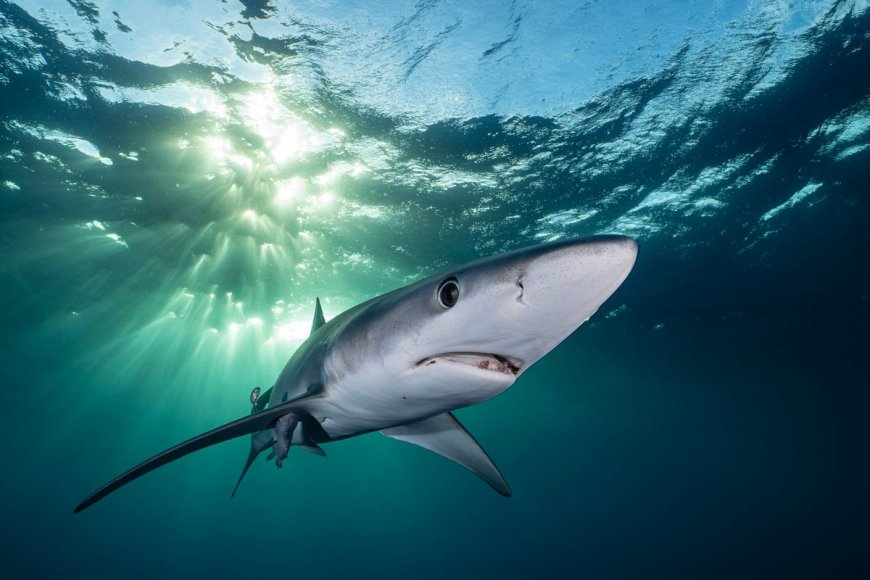Blue Shark's Color-Changing Ability Revealed by Study
Scientists have discovered that blue sharks can change color from blue to green and gold due to special crystals in their scales. This chameleon-like ability helps them camouflage in different environments. The research sheds light on how these sharks create their vibrant hues and may inspire eco-friendly ways to produce blue color.

The first time you see a blue shark in the water, it’s almost impossible not to be taken aback by just how blue they are. Scientists have discovered that blue sharks have special crystals inside their scales that create their distinctive shade and may give them chameleon-like abilities. These findings were presented at the Society for Experimental Biology Annual Conference.
The blue shark's crystal-filled scales allow it to change colour from blue to shades of green and gold. Dr. Viktoriia Kamska from City University of Hong Kong stated that blue is one of the rarest colours in the animal kingdom, and animals have evolved unique strategies to produce it.
The blue shark's strategy involves special crystals inside tooth-like scales known as dermal denticles that cover their bodies. These crystals reflect blue light and store melanin, a natural pigment that absorbs other wavelengths of light. By combining these materials, the shark can produce and change colour.
Computer simulations showed that when the crystals move closer together, the shark appears blue, and when they drift apart, its skin is tinted with greens and golds. This ability could help the shark stay camouflaged in changing environmental conditions.
Researchers are now eager to observe these colour changes in blue sharks in their natural habitat. Understanding this mechanism could inspire ways to create blue colour without using harmful chemicals.
Other marine animals like cephalopods and seahorses also have remarkable colour-changing abilities. Studying how blue sharks create their colour could provide new insights into evolutionary paths for making colour in different species.
According to the source: BBC Wildlife Magazine.
What's Your Reaction?
 Like
0
Like
0
 Dislike
0
Dislike
0
 Love
0
Love
0
 Funny
0
Funny
0
 Angry
0
Angry
0
 Sad
0
Sad
0
 Wow
0
Wow
0














































































































































































